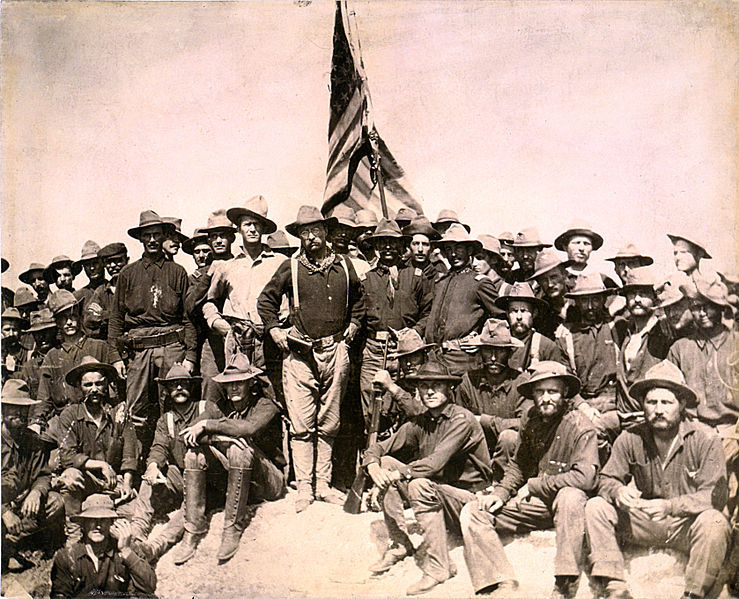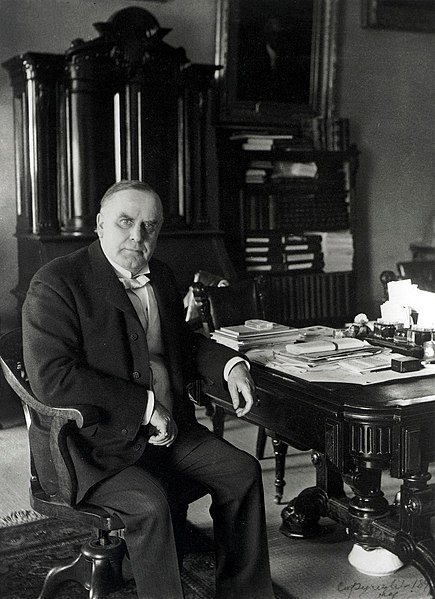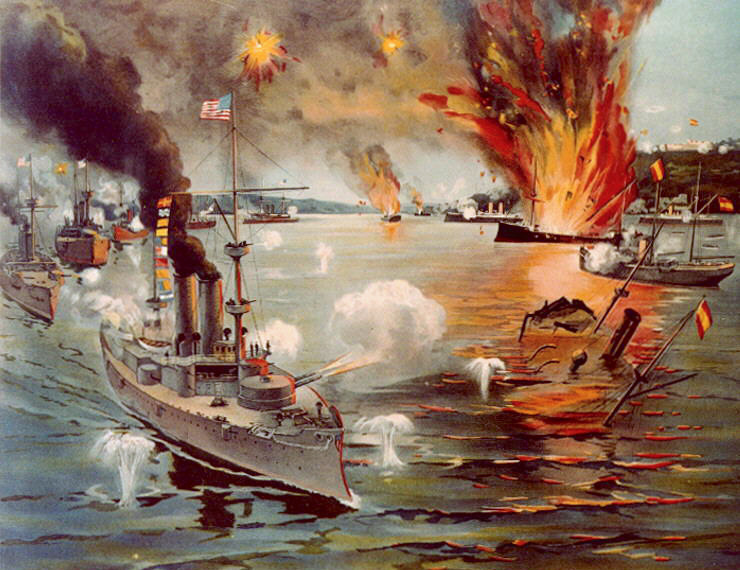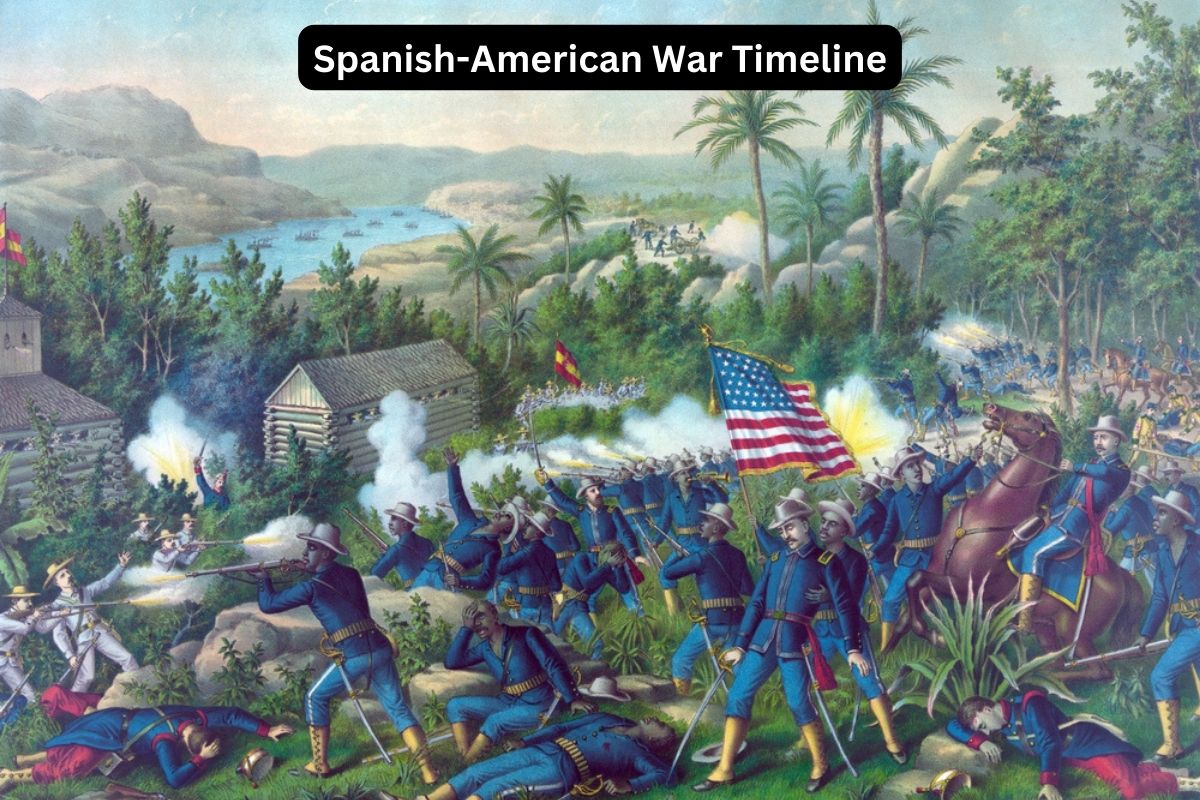The Spanish-American War of 1898 was a brief but pivotal conflict that had far-reaching consequences for the United States and Spain.
This war, which lasted just a few months, emerged from a complex web of factors, including Cuba’s struggle for independence from Spanish colonial rule, sensationalized journalism, and the explosion of the USS Maine.
In this brief introduction, we will delve into the causes, key events, and outcomes of the Spanish-American War, highlighting its role in shaping the United States’ emergence as a global power and marking the end of Spanish colonial dominance in the Americas.
| Date | Event |
|---|---|
| 1895-1898 | Cuban War of Independence against Spanish colonial rule begins. |
| February 15, 1898 | USS Maine explodes in Havana Harbor, leading to suspicions of Spanish involvement. |
| April 11, 1898 | President McKinley sends a war message to Congress, asking for authority to use force against Spain. |
| April 20, 1898 | Congress passes a joint resolution recognizing Cuba’s independence and authorizing the use of military force. |
| April 25, 1898 | The United States officially declares war on Spain, starting the Spanish-American War. |
| May 1, 1898 | Commodore George Dewey’s victory in the Battle of Manila Bay. |
| July 1, 1898 | Battle of Santiago de Cuba leads to Spanish fleet surrender. |
| August 12, 1898 | An armistice agreement is signed, ending fighting in Cuba. |
| December 10, 1898 | Treaty of Paris is signed, with Spain ceding territories to the United States. |
| April 11, 1899 | Treaty of Paris is ratified by the U.S. Senate, recognizing territorial acquisitions. |
Timeline of the Spanish-American War
1895-1898: Cuban War of Independence
The Cuban War of Independence was a prolonged struggle for independence by the Cuban people against Spanish colonial rule.
Also Read: US Wars Timeline
It began in 1895 when Cuban rebels, inspired by figures like José Martí and led by military leaders like General Antonio Maceo, launched a series of uprisings and guerrilla warfare against Spanish forces.

The Cuban rebels sought to free the island nation from Spanish oppression and gain sovereignty. They faced significant challenges, including Spain’s superior military strength and resources.
The Cuban War of Independence garnered international attention and sympathy, especially in the United States, where there was growing support for the Cuban cause. Many Americans, including influential journalists and politicians, advocated for Cuban independence.
February 15, 1898: USS Maine Explosion
On February 15, 1898, the USS Maine, a United States Navy battleship, exploded and sank in Havana Harbor, Cuba. The explosion resulted in the tragic loss of 266 American sailors.
The cause of the explosion remains a subject of debate and controversy to this day. At the time, it was widely reported and believed that the explosion was caused by Spanish sabotage, although no conclusive evidence was found to support this claim.
The incident significantly escalated tensions between the United States and Spain and played a pivotal role in pushing the two nations toward war. Sensationalized newspaper reports, particularly by newspapers like the New York Journal and the New York World, fueled anti-Spanish sentiment in the United States.
April 11, 1898: President McKinley’s War Message
On April 11, 1898, President William McKinley delivered a war message to the United States Congress, requesting the authority to use military force against Spain. In his message, President McKinley outlined the reasons for his request, which included the USS Maine explosion and the deteriorating situation in Cuba.
McKinley’s decision to send the war message was influenced by several factors, including public outrage over the sinking of the USS Maine and pressure from the media and political factions advocating for war.
The war message was a significant step toward the United States’ entry into the Spanish-American War, as it marked the formal request for a declaration of war against Spain. Congress would go on to pass a joint resolution authorizing the use of force, effectively starting the conflict.

April 20, 1898: Congress Passes a Joint Resolution
On April 20, 1898, the United States Congress passed a joint resolution that played a crucial role in the lead-up to the Spanish-American War. This resolution was significant because it recognized the independence of Cuba and authorized the use of military force to intervene in the conflict between Cuba and Spain.
The joint resolution declared that the United States would intervene in Cuba’s struggle for independence and take military action against Spain if necessary. It effectively served as a declaration of intent to go to war.
The resolution passed with overwhelming support in both the House of Representatives and the Senate, reflecting the growing sentiment in the United States in favor of intervening in the Cuban conflict.
April 25, 1898: U.S. Declares War
On April 25, 1898, the United States officially declared war on Spain. This declaration of war marked the beginning of the Spanish-American War, which would have profound consequences for both countries.
The decision to go to war was the culmination of escalating tensions between the United States and Spain, fueled by events such as the USS Maine explosion and the lobbying efforts of pro-war factions within the U.S. government and media.
With the declaration of war, the United States committed to using military force to achieve its objectives, which included liberating Cuba from Spanish control and asserting American influence in the broader context of imperial competition.

May 1, 1898: Battle of Manila Bay
On May 1, 1898, one of the first major naval battles of the Spanish-American War occurred in Manila Bay, Philippines. Commodore George Dewey led the U.S. Navy’s Asiatic Squadron in this historic engagement.
Dewey’s fleet engaged the Spanish fleet under Admiral Patricio Montojo y Pasarón and achieved a resounding victory. The American forces effectively destroyed or incapacitated the Spanish ships, with minimal casualties on the U.S. side.
This victory not only demonstrated the capability of the U.S. Navy but also had significant strategic implications. It effectively removed Spain’s naval presence in the Philippines, setting the stage for the eventual American occupation of the islands.
July 1, 1898: Battle of Santiago de Cuba
The Battle of Santiago de Cuba, fought on July 1, 1898, was a decisive naval engagement during the Spanish-American War. It took place off the coast of Santiago de Cuba, which was a major port and naval base for the Spanish fleet in the Caribbean.

In this battle, the U.S. Navy, under the command of Admiral William T. Sampson, and the U.S. Army, led by General William Shafter, cooperated in a combined operation to defeat the Spanish fleet. The American naval forces blockaded Santiago Harbor, preventing the Spanish fleet from escaping.
The battle culminated in a decisive victory for the United States. Several Spanish ships were either destroyed or scuttled by their own crews to avoid capture. This victory marked a significant turning point in the war and led to the surrender of Spanish forces in Cuba.
August 12, 1898: Armistice Agreement
On August 12, 1898, an armistice agreement was signed between the United States and Spain, ending the fighting in Cuba. The armistice effectively halted hostilities and provided a framework for negotiations leading to a formal peace treaty.
The armistice allowed for a temporary cessation of hostilities, providing relief for the war-weary soldiers and civilians in both Cuba and the United States.
It also set the stage for diplomatic discussions to determine the terms of a final peace settlement between the two nations.

December 10, 1898: Treaty of Paris
The Treaty of Paris, signed on December 10, 1898, officially ended the Spanish-American War. Negotiated in Paris, France, it laid out the terms of peace between the United States and Spain.
Under the treaty, Spain ceded several of its overseas territories to the United States. Puerto Rico and Guam were handed over to American control, while the Philippines were sold to the United States for $20 million.
Additionally, Cuba was granted independence from Spanish rule, although it remained under the influence of the United States through the Platt Amendment, which gave the U.S. certain rights and control over Cuban affairs.
April 11, 1899: Treaty of Paris Ratification
On April 11, 1899, the Treaty of Paris was ratified by the United States Senate. This formal ratification process confirmed the terms of the treaty and solidified the territorial acquisitions and changes in the aftermath of the war.
With Senate ratification, the United States officially gained control over Puerto Rico, Guam, and the Philippines, marking the expansion of American imperial interests beyond the continental United States.
The treaty’s ratification marked the conclusion of the Spanish-American War and the beginning of a new era in U.S. foreign policy, with the United States asserting itself as a global power.
